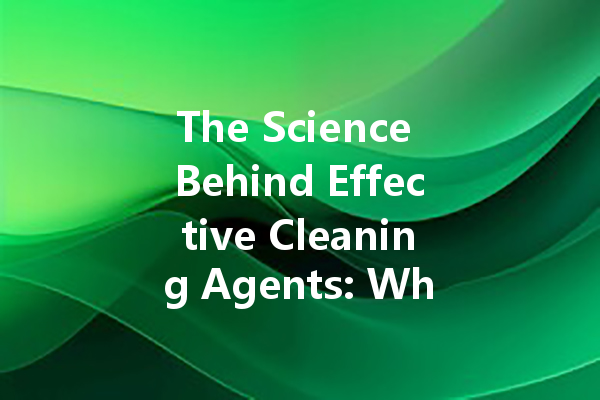Cleaning agents are a ubiquitous aspect of modern life, found in homes, offices, and industries. While we use these products daily, many of us may not fully understand the science behind how they work. This article will delve into the composition of cleaning agents, how they interact with various surfaces, and their impact on health and the environment.
Understanding Cleaning Agents
At their core, cleaning agents are substances designed to remove dirt, stains, and impurities from surfaces. But what makes them effective? The effectiveness of a cleaning agent is primarily determined by its chemical composition, which can include surfactants, solvents, detergents, and enzymes.
Types of Cleaning Agents
How Cleaning Agents Work
The Cleaning Process
The efficacy of cleaning agents is largely dependent on their interaction with the dirt or stain. There are a few essential steps involved in the cleaning process:

Compatibility with Surfaces
Not all cleaning agents are suitable for every surface. For instance, granite may be damaged by acidic cleaners, and wood can suffer from excessive moisture. It’s crucial to choose the appropriate cleaning agent based on the material being cleaned to avoid damage.
The Impact on Health and Environment
Cleaning agents can also pose risks to health and the environment. Many traditional cleaners contain harsh chemicals that can cause skin irritations, respiratory issues, or allergic reactions. Additionally, when these substances are washed down the drain, they can enter water systems and harm aquatic life.
Eco-Friendly Alternatives
In light of these concerns, there has been a surge in the popularity of eco-friendly cleaning agents. These products are formulated with biodegradable ingredients and often use natural surfactants derived from plants. This makes them safer for both users and the environment, allowing for effective cleaning without harmful side effects.
Conclusion
Understanding the science behind cleaning agents enables consumers to make informed choices about the products they use in their homes and workplaces. By being aware of the ingredients and their functions, individuals can select cleaning solutions that not only meet their needs but also contribute to a safer and cleaner environment. As innovations in cleaning technology continue to evolve, it is essential to stay informed about safe and effective cleaning practices.
